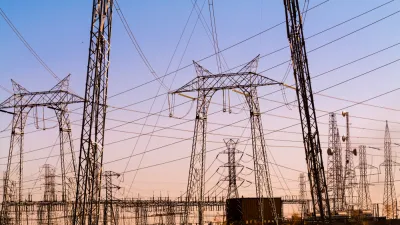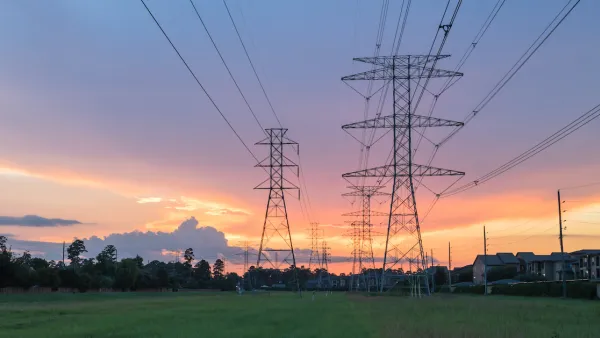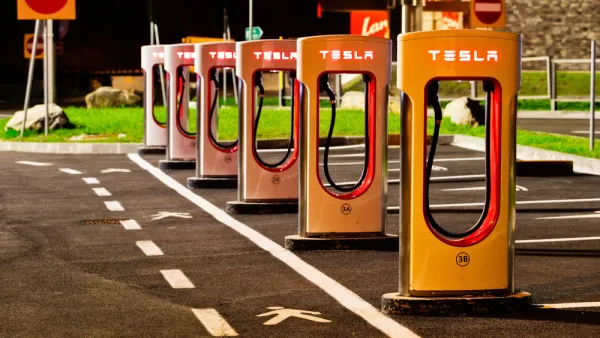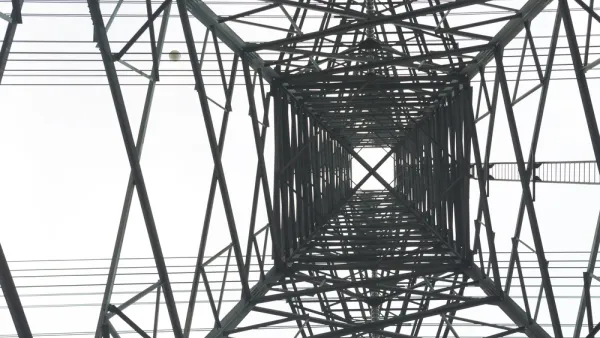The U.S. has entered a new power paradigm according to a new energy analysis that warns of unprecedented new demands for power, largely from “new manufacturing, industrial, and data center facilities,” and the grid is not prepared for the surge.

In 2016, transportation overtook power generation as the largest source of greenhouse gas emissions in the U.S. “For the first time since 1979, America’s cars, trucks, and airplanes emit more carbon dioxide than its power plants do,” reported Brad Plumer for Vox in a post on Planetizen on June 14, 2016.
[According to a fast fact from the U.S. Department of Energy's Vehicle Technologies Office, the exact date was October 24, 2016].
If current trends continue, it appears conceivable that power generation may retake its place as the largest source of the nation's greenhouse gas emissions, according to an energy analysis released in December 2023.
[Utility Dive was one of the first media outlets to cover the report: “US electricity load growth forecast jumps 81% led by data centers, industry: Grid Strategies,” December 13, 2023.]
Plumer, now with The New York Times, and Nadja Popovich, reported on the study on March 14 in the source article.
Over the past year, electric utilities have nearly doubled their forecasts of how much additional power they’ll need by 2028 as they confront an unexpected explosion in the number of data centers, an abrupt resurgence in manufacturing driven by new federal laws, and millions of electric vehicles being plugged in.
Many power companies were already struggling to keep the lights on, especially during extreme weather, and say the strain on grids will only increase. Peak demand in the summer is projected to grow by 38,000 megawatts nationwide in the next five years, according to an analysis [pdf] by the consulting firm Grid Strategies, which is like adding another California to the grid.
- Related post: Video: Can US Power Grid Handle AI’s Growing Energy Needs? March 14, 2024.
- Also by Plumer and Popovich: “Why the U.S. Electric Grid Isn’t Ready for the Energy Transition,” June 12, 2023.
The state that gets it right
“So far, one state that has kept pace with explosive demand is Texas, where electricity use has risen 29 percent over the past decade, partly driven by things like bitcoin mining, liquefied natural gas terminals and the electrification of oil fields,” report Popovich and Plumer.
Texas’s streamlined permitting process allows wind, solar and battery projects to get built and connected faster than almost anywhere else, and the state zoomed past California last year to lead the nation in large-scale solar power.
Energy experts are sounding the alarm
“The numbers we’re seeing are pretty crazy,” said Daniel Brooks, vice president of integrated grid and energy systems at the Electric Power Research Institute, a nonprofit organization.
“I can’t recall the last time I was so alarmed about the country’s energy trajectory,” said Tyler H. Norris, a former solar developer and expert in power systems who is now pursuing a doctorate at Duke University. If a wave of new gas-fired plants gets approved by state regulators, he said, “it is game over for the Biden administration’s 2035 decarbonization goal.”
“The main drivers are investment in new manufacturing, industrial, and data center facilities,” states the executive summary (pg. 3 of 29) in the report [pdf] published December 2023, adding, “The U.S. electric grid is not prepared for significant load growth.”
Economic and environmental challenges
“It’s worrisome that a resurgent American manufacturing sector may face headwinds from the limited ability of the nation’s electricity systems to respond," write Grid Strategy researchers John D. Wilson and Zach Zimmerman.
There are real risks that some regions may miss out on economic development opportunities because the grid can’t keep up.
Evan Halper also reported on the new energy projections for The Washington Post on March 7, noting that “soaring power consumption is delaying coal plant closures in Kansas, Nebraska, Wisconsin and South Carolina.”
Hat tip to Brian Yanity.
FULL STORY: A New Surge in Power Use Is Threatening U.S. Climate Goals

National Parks Layoffs Will Cause Communities to Lose Billions
Thousands of essential park workers were laid off this week, just before the busy spring break season.

Retro-silient?: America’s First “Eco-burb,” The Woodlands Turns 50
A master-planned community north of Houston offers lessons on green infrastructure and resilient design, but falls short of its founder’s lofty affordability and walkability goals.

Delivering for America Plan Will Downgrade Mail Service in at Least 49.5 Percent of Zip Codes
Republican and Democrat lawmakers criticize the plan for its disproportionate negative impact on rural communities.

Test News Post 1
This is a summary

Test News Headline 46
Test for the image on the front page.

Balancing Bombs and Butterflies: How the National Guard Protects a Rare Species
The National Guard at Fort Indiantown Gap uses GIS technology and land management strategies to balance military training with conservation efforts, ensuring the survival of the rare eastern regal fritillary butterfly.
Urban Design for Planners 1: Software Tools
This six-course series explores essential urban design concepts using open source software and equips planners with the tools they need to participate fully in the urban design process.
Planning for Universal Design
Learn the tools for implementing Universal Design in planning regulations.
EMC Planning Group, Inc.
Planetizen
Planetizen
Mpact (formerly Rail~Volution)
Great Falls Development Authority, Inc.
HUDs Office of Policy Development and Research
NYU Wagner Graduate School of Public Service





























